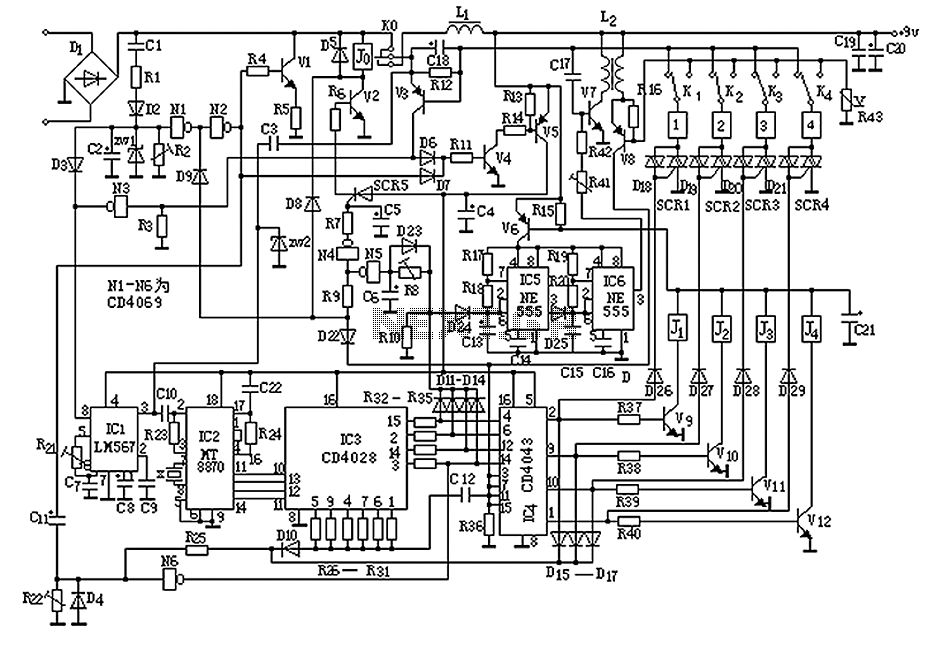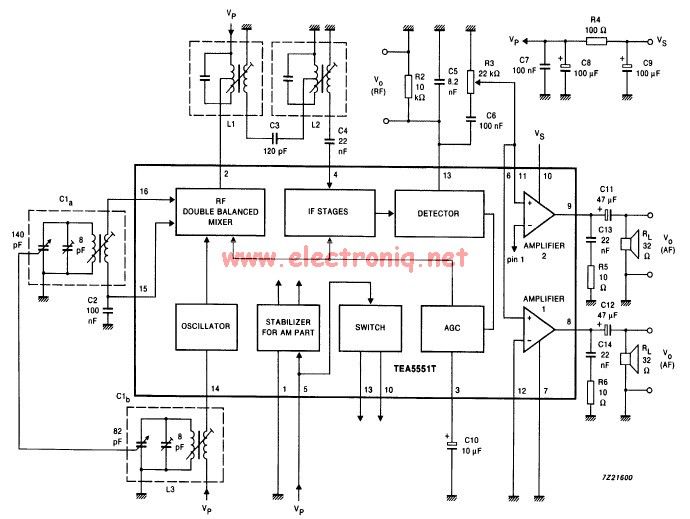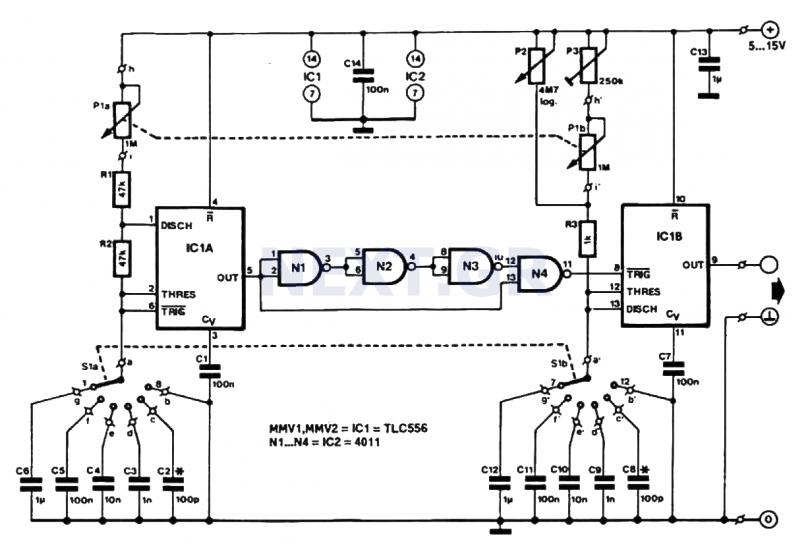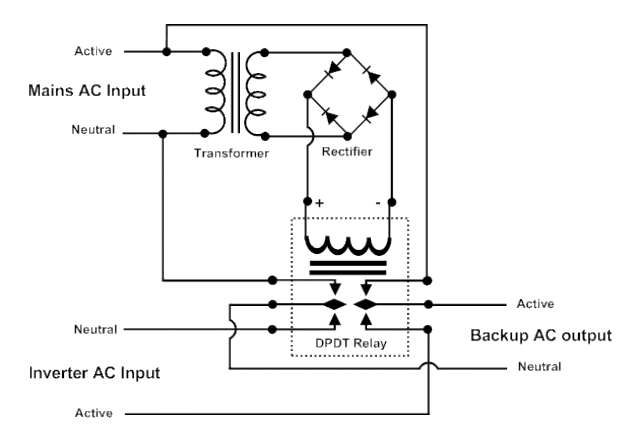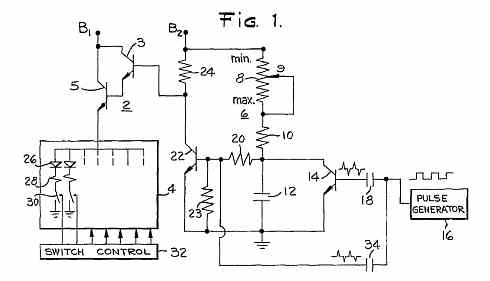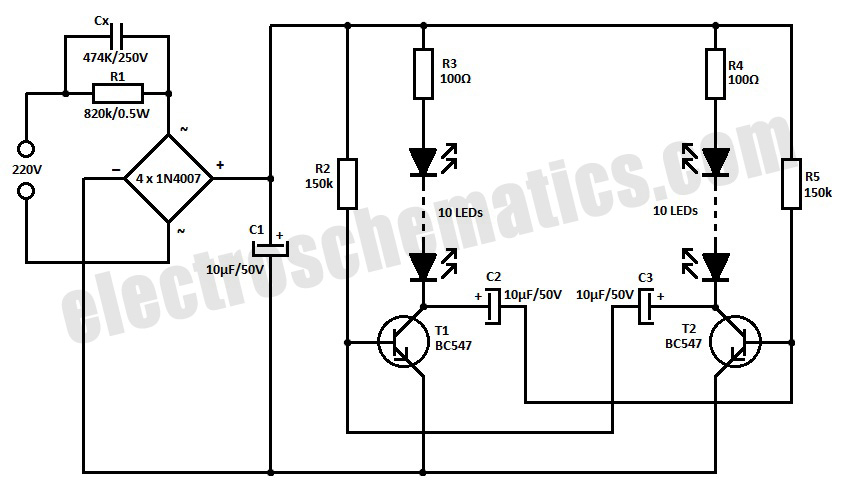
Lithium ion battery charging circuit diagram
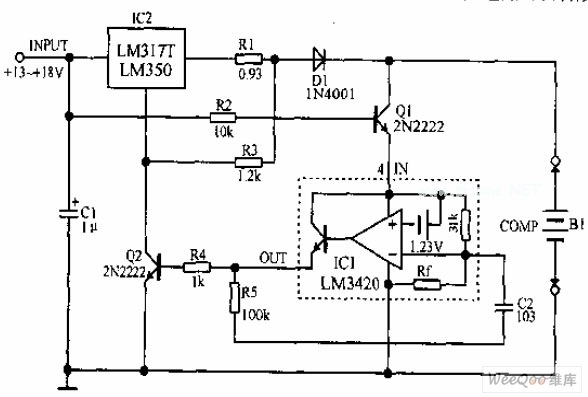
A lithium-ion battery charging circuit is illustrated above. Initially, when charging begins, if the battery voltage is below 8.4V, the output of IC1 is inactive. As a result, Q2 remains off, and the LM317 operates in constant current mode. When the battery voltage rises to 8.4V, Q2 activates, controlling the ADJ terminal, which causes a significant reduction in the output voltage of IC2, thereby affecting the charging current.
The lithium-ion battery charging circuit operates through a systematic approach to ensure the safe and efficient charging of the battery. The key components involved include an integrated circuit (IC1), a transistor (Q2), and a voltage regulator (LM317).
Initially, when the charging process commences, the battery voltage is monitored. If the voltage is below the threshold of 8.4V, IC1 does not output a signal. This lack of output keeps transistor Q2 in the off state, allowing the LM317 to function in its constant current mode. In this mode, the circuit delivers a steady current to the battery, which is crucial for preventing overcurrent conditions that could damage the battery.
As the battery voltage increases and reaches the critical threshold of 8.4V, Q2 turns on. This activation is significant as it alters the behavior of the circuit. By controlling the ADJ terminal of the LM317, Q2 effectively reduces the output voltage of IC2. This reduction is essential for transitioning the charging mode from constant current to constant voltage, which is the next phase of charging for lithium-ion batteries.
The circuit design ensures that the battery is charged safely by preventing overvoltage and overcurrent conditions, which are critical for maintaining the longevity and performance of lithium-ion batteries. Additionally, this circuit can be enhanced with protection features such as thermal cutoffs, overvoltage protection, and current limiting resistors to further safeguard the battery during charging.
Overall, the described charging circuit provides a reliable solution for lithium-ion battery management, emphasizing the importance of monitoring voltage levels and regulating current throughout the charging process.Lithium-ion battery charging circuit is shown as above. When it starts to charge. The battery voltage is below 8.4V, IC1`s output has no output. Q2 off, LM317 work in the constant current output. When the battery voltage is increased to 8.4V, Q2 turns on, Q2 controls ADJ-side, so that the output voltage of IC2 significant declines and make the charge curre.. 🔗 External reference
The lithium-ion battery charging circuit operates through a systematic approach to ensure the safe and efficient charging of the battery. The key components involved include an integrated circuit (IC1), a transistor (Q2), and a voltage regulator (LM317).
Initially, when the charging process commences, the battery voltage is monitored. If the voltage is below the threshold of 8.4V, IC1 does not output a signal. This lack of output keeps transistor Q2 in the off state, allowing the LM317 to function in its constant current mode. In this mode, the circuit delivers a steady current to the battery, which is crucial for preventing overcurrent conditions that could damage the battery.
As the battery voltage increases and reaches the critical threshold of 8.4V, Q2 turns on. This activation is significant as it alters the behavior of the circuit. By controlling the ADJ terminal of the LM317, Q2 effectively reduces the output voltage of IC2. This reduction is essential for transitioning the charging mode from constant current to constant voltage, which is the next phase of charging for lithium-ion batteries.
The circuit design ensures that the battery is charged safely by preventing overvoltage and overcurrent conditions, which are critical for maintaining the longevity and performance of lithium-ion batteries. Additionally, this circuit can be enhanced with protection features such as thermal cutoffs, overvoltage protection, and current limiting resistors to further safeguard the battery during charging.
Overall, the described charging circuit provides a reliable solution for lithium-ion battery management, emphasizing the importance of monitoring voltage levels and regulating current throughout the charging process.Lithium-ion battery charging circuit is shown as above. When it starts to charge. The battery voltage is below 8.4V, IC1`s output has no output. Q2 off, LM317 work in the constant current output. When the battery voltage is increased to 8.4V, Q2 turns on, Q2 controls ADJ-side, so that the output voltage of IC2 significant declines and make the charge curre.. 🔗 External reference
